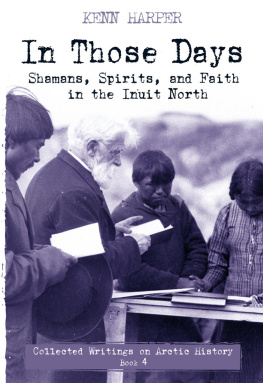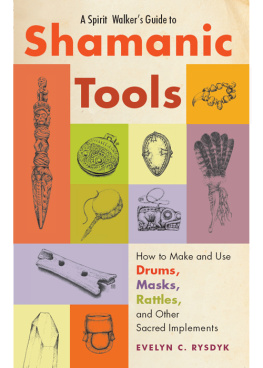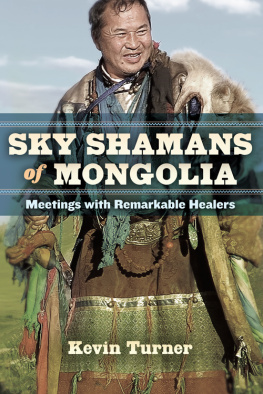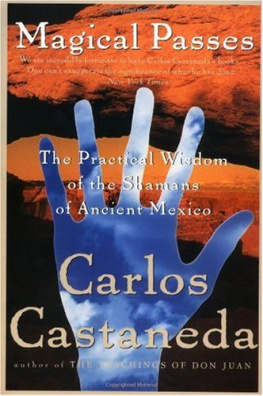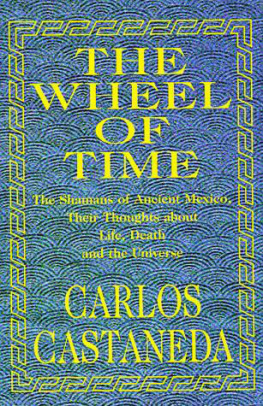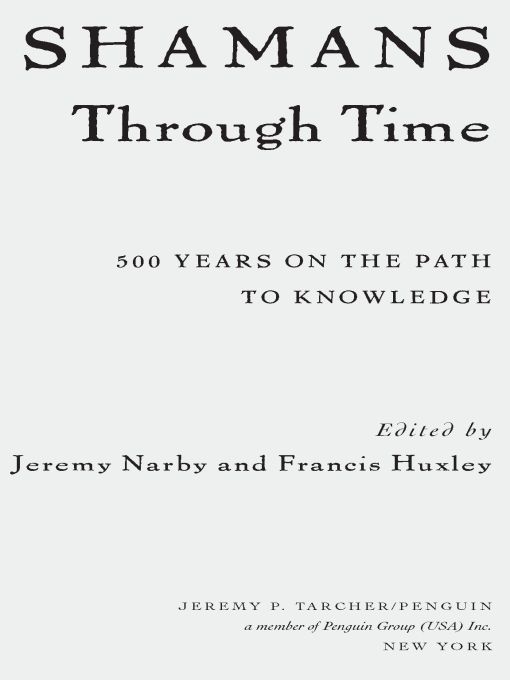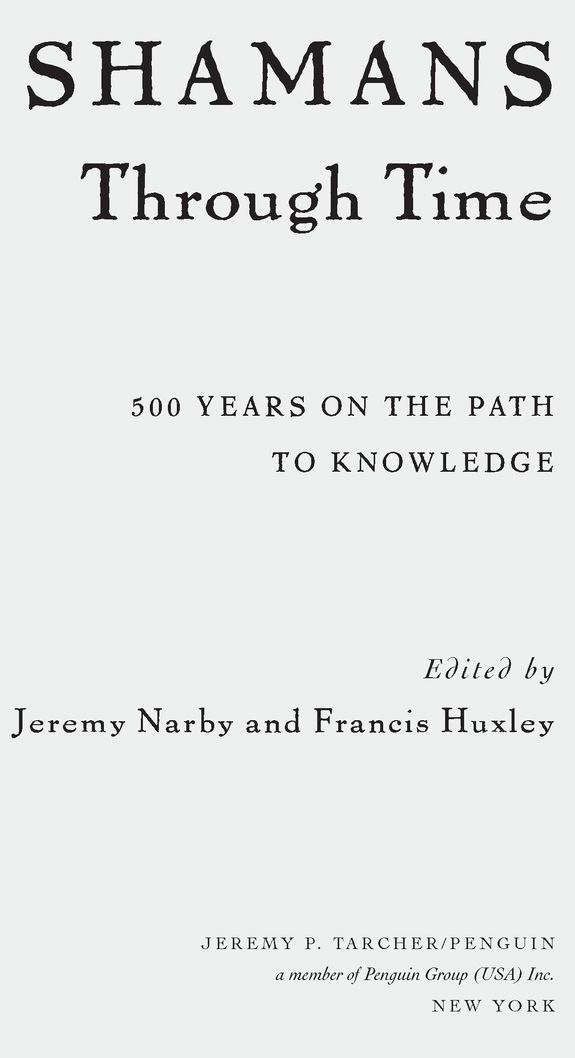Table of Contents
ALSO BY JEREMY NARBY
The Cosmic Serpent: DNA and the Origins of Knowledge
ALSO BY FRANCIS HUXLEY
Affable Savages: An Anthropologist Among the Urub Indians of Brazil
The Invisibles: Voodoo Gods in Haiti
The Way of the Sacred
The Dragon: Nature of Spirit, Spirit of Nature
The Eye: The Seer and the Seen
Note to Readers
This book will take you on a journey through time in which you will find eyewitness reports of shamans by priests, explorers, adventurers, natural historians, and political dissidents. You will see how the field of anthropology grew out of this past and led to an even deeper quest for knowledge, first from a distance, and then in a more intimate way, when researchers began taking part in shamanic sessions.
The editors translated many of the early texts, as well as several later ones. References to these translations are noted in the back of the book.
Introduction:
Five Hundred Years of Shamans and Shamanism
JEREMY NARBY AND FRANCIS HUXLEY
Five centuries ago, when Europeans began to explore the Americas, they came across people in many communities who claimed to communicate with spirits in order to learn about life and healing. Some of these people would fast until they looked like skeletons; others would drink tobacco juice through funnels or wear collars filled with stinging ants. After witnessing such acts, the Europeans often expressed profound distaste when they wrote about them. In 1557, for example, French priest Andr Thvet visited Brazil and described the people who behaved in this way as ministers of the Devil. Thvet questioned these peoples quest to learn what he considered to be forbidden knowledge: What need is there to research with too much curiosity into the secrets of nature and other things, knowledge of which Our Lord has reserved for Himself? Such curiosities indicate an imperfect judgement, ignorance, and a lack of faith and good religion.
In the seventeenth century, Russians began colonizing Siberia, and they, too, found individuals who claimed to communicate with spirits. Among the Tungus-speaking people of Eastern Siberia, such individuals were called saman or shaman. These shaman played drums, sang, and put on ventriloquist and trickster performances, imitating animal sounds in the dark or pretending to stab themselves with knives. They claimed they could heal people, or harm them, influence the weather or the availability of game, and foresee the future. Priest Avvakum Petrovich, who provided the first written account of a Siberian shaman, described him as a villain of a magician who calls the demons.
As European observers spread out into the world, they came upon many different people who said they communicated with spirits to learn about life and healing. These people were designated by many names in many languages, such as pag, piay, angakkut, arendiouannens, and shaman. The observers, who came from countries such as Spain, England, France, Russia, and Germany, referred to them in their respective languages as jugglers, sorcerers, wizards and conjurers, and other, often derogatory, terms.
By the eighteenth century, in the period known as the Enlightenment, Europeans began observing the world with a different gaze. The German philosopher Immanuel Kant declared the motto of the Enlightenment to be Dare to Know! Yet, early rationalist observers generally dismissed shamans. They no longer feared knowledge, but shamans still troubled them with their odd behavior. In their view, shamanic performances and tricks had little to do with true knowledge.
These observers were budding scientists. They aspired to a measured and objective gaze. Their goal was to understand the world through reason. When they came upon shamans, they tended to view them as impostors who deserved debunking. For example, when German professor Johann Gmelin witnessed a performance in Siberia by a Tungus shaman and his assistants, he concluded that they deserved perpetual labor in the silver mines for their hocus-pocus.
The nineteenth century gave birth to the academic study of human beings. This new discipline, called social anthropology or ethnology, got off to a poor start. The first anthropologists believed that indigenous people were savages and primitives and belonged to inferior societies. Unfortunately, these early anthropologists did not provide many useful reports on shamans at a time when western civilization ran roughshod over indigenous societies and shamanism was rapidly changing.
Toward the end of the nineteenth century, however, some anthropologists realized that there was no fundamental difference between themselves and the people they were observing. For example, German-American Franz Boas wrote in 1887: The Eskimo is a man as we are; his feelings, his virtues, and his shortcomings are based in human nature, like ours.
At the beginning of the twentieth century, anthropologists started taking their biases into consideration. This improved their observation skills and led them to write an unprecedented number of detailed reports on shamans. They also started giving shamans the opportunity to speak for themselves. Danish anthropologist Knud Rasmussen, for example, took down word-for-word accounts of the Inuit and published them in the 1920s. One shaman called Igjugrjuk told Rasmussen: True wisdom is only to be found far away from people, out in the great solitude, and it is not found in play but only through suffering. Solitude and suffering open the human mind, and therefore a shaman must seek his wisdom there. Through such texts it became possible to learn about these practitioners in a new empathetic way.
In Rasmussens time, not all anthropologists were so open-minded. Some viewed shamans as mentally illgiven that they had hallucinations they took seriously, claimed to communicate with spirits, and spoke with voices not their own. For decades, anthropologists debated the mental health of shamans. In his fine dialectical style, French anthropologist Claude Lvi-Strauss turned this debate on its head. He argued that shamans were more like psychoanalysts than psychopaths. Other observers confirmed that shamans were often among the healthiest individuals in their communities and were usually considered doctors by their peers.
By the middle of the twentieth century, anthropologists had reported in detail on shamans in places as remote from one another as Australia, the Arctic, and the Amazon. Locally these practitioners were called by different names, but these terms all seemed to be synonymous with the Siberian shaman. In light of this similarity, Swiss anthropologist Alfred Mtraux used the term to describe the Amazonian piai he was studying. According to Mtraux, the shamans functions include curing illnesses, charming game, interpreting signs or omens, influencing the weather, and predicting the future. The shaman can also cause harm, he said.
But beneath this bewildering array of skills and functions, Mtraux saw an underlying unity. In 1944 he defined the shaman as any individual who maintains by profession and in the interest of the community an intermittent commerce with spirits, or who is possessed by them. This remains the simplest definition for what is often a confusing subject.



